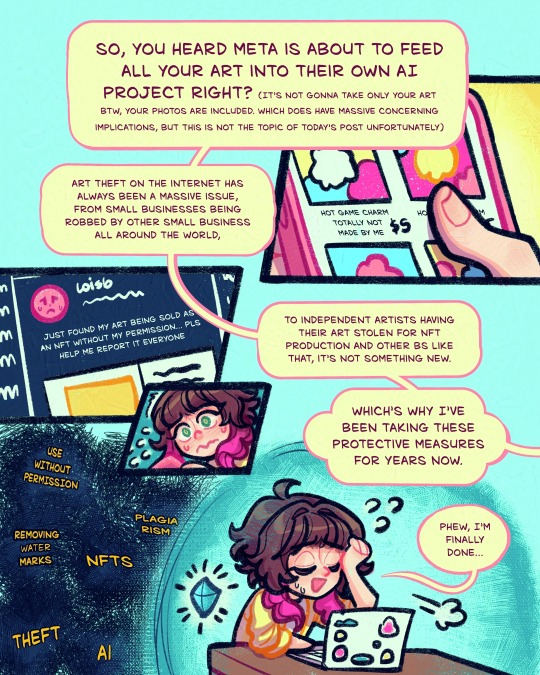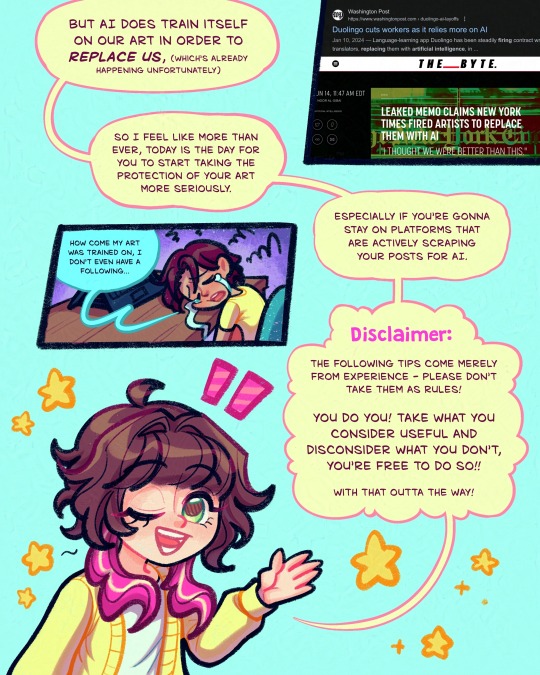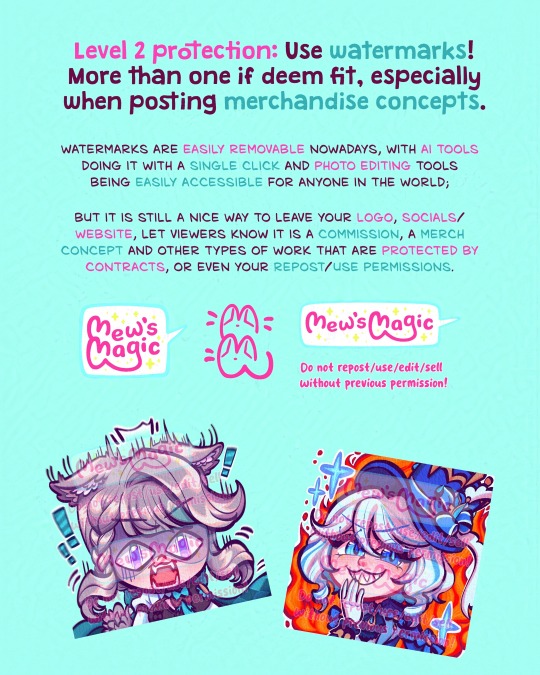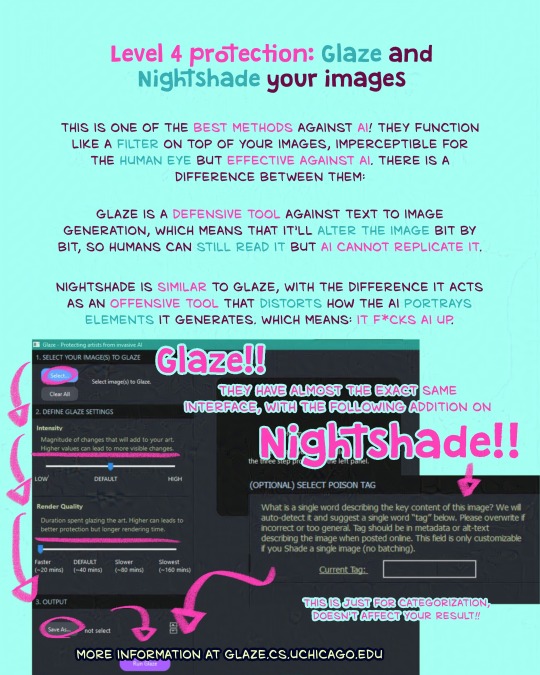#ai in businesses
Explore tagged Tumblr posts
Text

#I'm serious stop doing it#theyre scraping fanfics and other authors writing#'oh but i wanna rp with my favs' then learn to write#studios wanna use ai to put writers AND artists out of business stop feeding the fucking machine!!!!
165K notes
·
View notes
Text
The Real-World Dangers of AI in Businesses - Bionic

This Blog was Originally Published at:
The Real-World Dangers of AI in Businesses — Bionic
A very good friend of mine once recounted a story about a boardroom meeting where his CTO outlined grand plans for AI implementation. He sketched a picture of integrated operations, efficient data analysis, and exceptional growth. It sounded like the ultimate in convenience and the very epitome of what the new millennium would be like. Yet, as the details unfolded, a sense of skepticism began to rise, a feeling not easily dismissed.
This was not the first time such a scenario had been observed. The buzz, the expectations, the appeal of a technological fix-it-all. I also know that AI doesn’t always work as perfectly as it was expected. Hence, there are potential dangers of AI that firms ought to be aware of.
Fast forward half a year, and the company was in complete disarray. The implementation of the AI landed the company in legal trouble. Critical information was fabricated, harmful biases were perpetuated, and the company was caught amid controversy.
The CTO had underestimated the complexities of responsible AI development and neglected to consider the potential for hallucinations and biases that could derail the project.
In this blog post, let me unveil the dichotomy of the AI used in businesses. We will look at the business challenges that are out there, the dangers of AI, and why AI is bad if done incorrectly.
“My worst fear is that we, the industry, cause significant harm to the world. I think, if this technology goes wrong, it can go quite wrong and we want to be vocal about that and work with the government on that.” ~Sam Altman
Dangers of AI Usage
Artificial Intelligence promises a future of unparalleled innovation and efficiency. However, as with any transformative technology, it is essential to acknowledge and address the potential risks of artificial intelligence that lie within.
Reliance on the Data Dilemma: Garbage In, Garbage Out
One of the major dangers of AI lies in its reliance on data. AI’s biggest strength is also its biggest weakness: its reliance on data. AI algorithms learn by analyzing massive datasets, but if the data is biased, incomplete, or irrelevant, the AI’s output will be flawed.
Take the example of Amazon’s AI recruiting tool, which was designed to streamline the hiring process. The system was trained on resumes submitted to the company over 10 years, but because most of those resumes came from men, the AI learned to favor male candidates. (Know more)
This is a prime example of why AI can be bad when underlying biases aren’t addressed. Amazon eventually scrapped the project due to concerns about bias, highlighting the AI threat to fair decision-making.
Another common challenge is the sheer volume of data required to train AI models effectively. A study by OpenAI found that the amount of computing used in the largest AI training runs has been doubling every 3.4 months since 2012. (Know more)

The Talent Gap: Finding the AI Wizards
AI is a rapidly evolving field, and there’s a severe shortage of experts who understand the technology and can apply it to real-world problems. According to a 2021 report by Element AI, there are fewer than 10,000 AI researchers in the world. This talent gap is making it difficult for businesses to find and retain skilled AI professionals. This shortage magnifies the risks of AI projects failing due to a lack of expertise.
Salaries for AI engineers can easily reach six figures, and many companies are competing for the same limited pool of talent. Smaller businesses, in particular, may struggle to attract top talent due to budget constraints and lack of resources, exacerbating the disadvantages of AI for those with limited means.
Integration and Implementation Woes
Integrating AI into existing systems and workflows is often a complex and time-consuming process. This can be done using the Grounding AI technique which is basically grounding the AI systems in real world data and scenarios. Many businesses underestimate the technical challenges involved and end up spending more time and money than they anticipated. This is a significant risk of AI adoption that can lead to cost overruns and delays.
In addition to technical hurdles, there’s also the issue of employee resistance. AI can be disruptive, and it’s not uncommon for employees to feel threatened by the technology. Change management is crucial for a successful AI implementation, but it’s often overlooked or underestimated.
Ethical and Legal Concerns
AI raises a lot of ethical and legal concerns, from algorithmic bias and privacy violations to job displacement and lack of transparency in decision-making. These issues are becoming increasingly important as AI plays an important role in our lives, making them a serious AI threat if not addressed.

The AI Hallucinations Problem: When AI Makes Things Up
One of the more recent and concerning dangers of artificial intelligence is the phenomenon of AI hallucinations. This is when an AI model generates nonsensical, irrelevant, or factually incorrect outputs. This can be particularly problematic in business settings, where AI-generated outputs and decisions can have real-world consequences.
For example, an AI-powered financial analysis tool might produce a report that predicts a market crash based on faulty data or incorrect assumptions. This could lead investors to make poor decisions, resulting in significant financial losses. The risk of AI hallucinations emphasizes the importance of human oversight and critical thinking when using AI systems in business.
By involving the human in the loop, the AI system gets the right and well-adapted information which can change the business process outsourcing industry by aligning AI with real-world applications.
Cost and ROI: The Elephant in the Room
AI projects can be expensive. Developing, training, and maintaining AI systems requires significant investments in hardware, software, and talent. Many businesses underestimate the costs and are surprised when they start to add up. This financial burden is one of the key disadvantages of AI, especially for smaller businesses.
Even if a company can afford to invest in AI, there’s no guarantee that it will see a return on its investment. Measuring the ROI of AI projects can be difficult, and there’s always the risk that the technology won’t deliver the promised results. This uncertainty adds another layer to the dangers of AI, making it a risky proposition for some businesses.
Solutions: Navigating the Dangers of AI
Yes, there is no denying that there are some Artificial intelligence problems in business, but such problems can be solved. Here are a few potential solutions:
Data: Ensure that you give adequate attention to data acquisition, data preprocessing, and data tagging. You may potentially locate third-party companies or open-source groups who could help you build a bigger and more assorted database.
Talent: Promote employee upskilling on AI applications and incorporate universities as well as research institutions to access potential talent.
Integration: Always begin with pilot projects and then move on to large-scale implementation as a way of building experience and confidence.
Ethics: Come up with definite ethical standards for the application of AI and make sure that all your AI products are traceable and answerable.
ROI: Be precise on your expectations for the various AI initiatives and monitor their effectiveness consistently. It is always recommended to cut loose what is not working for the organization or the team.
Conclusion
There is no doubt that the adoption of AI is promising to revolutionize the business experiences but such a process is fraught with challenges. AI brings exciting and innovative possibilities, which organizations have to consider when implementing AI in organizations seeking to exploit the application of AI.
However, recognizing these challenges — with data and talent, with bias and ethics, with hallucination — provides firms with a roadmap to success.
The ability to deliver AI responsibly involves not only technical skills but also knowledge of some possible impacts and adherence to ethical standards. This way, all the AI’s potential can be unleashed and used for building innovation, increasing efficiency, and creating sustainable business value.
As with any technology, one must never forget that AI is a tool and the actual power lies in the hearts and minds of those who use it.
Sick of AI hallucinations causing your company to go off track? See how Bionic’s Grounding AI technology mitigates these risks for your AI-driven insights so that they are sound and genuine. See how Bionic can help your business grow. Request a demo now!
0 notes
Text
*raises my hand to ask a question* what if we collectively refused to refer to AI as 'AI'? it's not artificial intelligence, artificial intelligence doesn't currently exist, it's just algorithms that use stolen input to reinforce prejudice. what if we protested by using a more accurate name? just spitballing here but what about Automated Biased Output (ABO for short)
31K notes
·
View notes
Text
What Are the Benefits of Artificial Intelligence for Businesses?
In today’s rapidly evolving business landscape, the integration of artificial intelligence (AI) has become more than just a trend — it’s a necessity for staying competitive. From streamlining operations to revolutionizing customer experiences, AI offers a multitude of benefits that can significantly impact a company’s bottom line.

Introduction
Artificial intelligence, often abbreviated as AI, refers to the simulation of human intelligence processes by machines, particularly computer systems. In the business context, AI encompasses a variety of technologies such as machine learning, natural language processing, and robotics, all aimed at automating tasks, analyzing data, and making informed decisions without explicit human intervention.
Automation and Efficiency
One of the most significant advantages of AI for businesses is its ability to automate tasks and improve efficiency across various operations. By leveraging AI-powered systems, organizations can streamline processes, reduce manual labor, and eliminate the risk of human error. For example, in manufacturing, AI-driven robotics can handle repetitive assembly tasks with precision and speed, leading to higher production rates and lower operating costs.
Data Analysis and Insights
Another key benefit of AI is its capability to analyze vast amounts of data and extract valuable insights that can inform strategic decision-making. With the proliferation of big data, businesses can use AI algorithms to identify patterns, trends, and correlations within their datasets, enabling them to anticipate market changes, identify new opportunities, and optimize their operations accordingly.
Personalized Customer Experiences
AI technologies enable businesses to deliver personalized customer experiences at scale, enhancing customer satisfaction and loyalty. Through the use of chatbots, virtual assistants, and recommendation engines, companies can interact with customers in real time, provide tailored product recommendations, and offer proactive support, ultimately driving engagement and increasing sales.
Cost Reduction and Resource Optimization
By automating repetitive tasks and optimizing resource allocation, AI can help businesses reduce costs and improve overall efficiency. Whether it’s through predictive maintenance in manufacturing, route optimization in logistics, or demand forecasting in retail, AI-powered solutions can help companies make smarter decisions that minimize waste and maximize profitability.
Competitive Advantage
Embracing AI gives businesses a competitive edge by enabling them to innovate faster, adapt to market changes more effectively, and outperform their competitors. Companies that leverage AI technologies for process optimization, product innovation, and customer engagement can differentiate themselves in crowded markets and establish themselves as industry leaders.
***Accelerate Your Business with Artificial Intelligence Services***
Risk Management
AI plays a crucial role in identifying and mitigating risks for businesses, particularly in areas such as cybersecurity and fraud detection. By continuously monitoring data streams and analyzing patterns for anomalies, AI systems can detect potential threats in real time, enabling companies to take proactive measures to safeguard their assets and reputation.
Scalability and Flexibility
One of the inherent advantages of AI is its scalability, allowing businesses to easily expand or adapt their AI infrastructure to meet evolving needs. Whether it’s scaling up operations to handle increased demand or pivoting to new markets, AI provides the flexibility needed to stay agile in a dynamic business environment.
Improved Decision-Making
With AI-powered analytics tools, businesses can make faster, more informed decisions based on real-time data and predictive insights. Whether it’s optimizing supply chain logistics, pricing strategies, or marketing campaigns, AI empowers decision-makers to act with confidence, driving better outcomes and business success.
Enhanced Productivity
AI technologies not only automate repetitive tasks but also empower employees to focus on more strategic and creative endeavors. By offloading mundane tasks to AI-driven systems, workers can devote their time and energy to high-value activities that require human expertise, leading to increased productivity and job satisfaction.
Innovation and Creativity
Far from replacing human creativity, AI has the potential to enhance it by augmenting human capabilities and enabling new forms of innovation. From designing more efficient processes to developing breakthrough products and services, AI can unleash the creative potential of businesses and drive continuous innovation in every aspect of operations.
Ethical Considerations
While the benefits of AI for businesses are undeniable, it’s essential to address the ethical implications associated with its use. From concerns about data privacy and bias in algorithms to the impact of automation on employment, businesses must approach AI adoption with careful consideration for ethical and societal implications.
Challenges and Limitations
Despite its potential, implementing AI in business comes with its own set of challenges, including technical complexity, data quality issues, and resistance to change from employees. Additionally, there are concerns about the ethical and societal implications of AI, such as job displacement and algorithmic bias, which must be carefully addressed to ensure responsible AI usage.
Future Outlook
Looking ahead, the future of AI in business is promising, with continued advancements in technology driving new opportunities for innovation and growth. As AI becomes more accessible and affordable, businesses of all sizes will have the opportunity to harness its power to drive efficiency, enhance competitiveness, and unlock new possibilities for value creation.
Conclusion
In overview, artificial intelligence has the potential to revolutionize the way businesses operate, offering a wide range of benefits across various aspects of operations. From automation and efficiency gains to enhanced decision-making and innovation, AI can help businesses stay ahead of the curve and thrive in today’s fast-paced, data-driven economy.
FAQs
Is AI only beneficial for large corporations?
No, AI offers benefits for businesses of all sizes, from startups to multinational corporations. The key is to identify areas where AI can add value and tailor solutions to specific needs and budgets.
How can businesses address concerns about job displacement due to AI?
While AI may automate some tasks, it also creates new opportunities for employment in areas such as AI development, data analysis, and customer experience management. Businesses can mitigate concerns by investing in training and reskilling programs for employees.
What are some ethical considerations businesses should keep in mind when implementing AI?
Businesses should prioritize transparency, fairness, and accountability in AI systems to ensure ethical usage. This includes addressing biases in algorithms, protecting user privacy, and ensuring that AI-driven decisions align with ethical values.
How can businesses measure the ROI of AI investments?
Businesses can measure the ROI of AI investments by tracking key performance indicators such as cost savings, revenue growth, productivity gains, and customer satisfaction metrics. It’s essential to set clear objectives and regularly evaluate the impact of AI initiatives on business outcomes.
What role does AI play in driving innovation within businesses?
AI enables businesses to leverage data-driven insights, automate processes, and unlock new opportunities for creativity and innovation. By empowering employees with AI tools and fostering a culture of experimentation, businesses can drive continuous innovation and stay ahead of the competition.
0 notes
Text
The Transformative Power Of RPA And AI In Business Processes
In today's fast-paced business landscape, enterprises must continuously evolve and optimize their processes, technology, and people to stay competitive. To achieve this, business leaders are turning to the transformative power of Robotic Process Automation and AI. This combination of technologies, known as hyperautomation, is revolutionizing industries across the board, from healthcare and supply chain to banking and finance, and so on.

In this article, we will explore the immense potential of RPA and AI in driving process efficiency, improving customer experiences, and fostering a culture of innovation.
#RPA And AI#ai technologies#rpa robotics#rpa process automation#rpa and automation#rpa in automation#ai software#vendor management#automation for marketing#business process automation#ai for business#finance ai#ai in businesses#ai in financial#RPA technology#RPA and AI in Vendor Management
0 notes
Text
"this new generation is the dumbest and laziest ever because ai is ruining people's ability to learn!!! Why are you using ai to write emails and cover letters when you could instead LEARN this beautiful, important and valuable skill instead of growing lazy and getting ai slop to slop it for you?" oh my god. oooooh my god. oh my goooooood.
#yeah fucking cover letters and business emails a dying art of divine human communication ruined by ai#''hiring managers love me so much because I handwrite my cover letters like a human'' hiring managers actually don't care if you live or di#tumblr hate posting
1K notes
·
View notes
Text

yeah alr ig
#this is what domestic au's are to me personally#hlvrai#hlvrai fanart#half life vr but the ai is self aware#benrey#hlvrai benrey#gordon feetman#hlvrai gordon#gonna be somewhat honest i havent posted in a month cuz i was busy reading homestuck for the first time. merp :p#i fomo'd too close to the sun and here we are#wimb art
1K notes
·
View notes
Text
What kind of bubble is AI?

My latest column for Locus Magazine is "What Kind of Bubble is AI?" All economic bubbles are hugely destructive, but some of them leave behind wreckage that can be salvaged for useful purposes, while others leave nothing behind but ashes:
https://locusmag.com/2023/12/commentary-cory-doctorow-what-kind-of-bubble-is-ai/
Think about some 21st century bubbles. The dotcom bubble was a terrible tragedy, one that drained the coffers of pension funds and other institutional investors and wiped out retail investors who were gulled by Superbowl Ads. But there was a lot left behind after the dotcoms were wiped out: cheap servers, office furniture and space, but far more importantly, a generation of young people who'd been trained as web makers, leaving nontechnical degree programs to learn HTML, perl and python. This created a whole cohort of technologists from non-technical backgrounds, a first in technological history. Many of these people became the vanguard of a more inclusive and humane tech development movement, and they were able to make interesting and useful services and products in an environment where raw materials – compute, bandwidth, space and talent – were available at firesale prices.
Contrast this with the crypto bubble. It, too, destroyed the fortunes of institutional and individual investors through fraud and Superbowl Ads. It, too, lured in nontechnical people to learn esoteric disciplines at investor expense. But apart from a smattering of Rust programmers, the main residue of crypto is bad digital art and worse Austrian economics.
Or think of Worldcom vs Enron. Both bubbles were built on pure fraud, but Enron's fraud left nothing behind but a string of suspicious deaths. By contrast, Worldcom's fraud was a Big Store con that required laying a ton of fiber that is still in the ground to this day, and is being bought and used at pennies on the dollar.
AI is definitely a bubble. As I write in the column, if you fly into SFO and rent a car and drive north to San Francisco or south to Silicon Valley, every single billboard is advertising an "AI" startup, many of which are not even using anything that can be remotely characterized as AI. That's amazing, considering what a meaningless buzzword AI already is.
So which kind of bubble is AI? When it pops, will something useful be left behind, or will it go away altogether? To be sure, there's a legion of technologists who are learning Tensorflow and Pytorch. These nominally open source tools are bound, respectively, to Google and Facebook's AI environments:
https://pluralistic.net/2023/08/18/openwashing/#you-keep-using-that-word-i-do-not-think-it-means-what-you-think-it-means
But if those environments go away, those programming skills become a lot less useful. Live, large-scale Big Tech AI projects are shockingly expensive to run. Some of their costs are fixed – collecting, labeling and processing training data – but the running costs for each query are prodigious. There's a massive primary energy bill for the servers, a nearly as large energy bill for the chillers, and a titanic wage bill for the specialized technical staff involved.
Once investor subsidies dry up, will the real-world, non-hyperbolic applications for AI be enough to cover these running costs? AI applications can be plotted on a 2X2 grid whose axes are "value" (how much customers will pay for them) and "risk tolerance" (how perfect the product needs to be).
Charging teenaged D&D players $10 month for an image generator that creates epic illustrations of their characters fighting monsters is low value and very risk tolerant (teenagers aren't overly worried about six-fingered swordspeople with three pupils in each eye). Charging scammy spamfarms $500/month for a text generator that spits out dull, search-algorithm-pleasing narratives to appear over recipes is likewise low-value and highly risk tolerant (your customer doesn't care if the text is nonsense). Charging visually impaired people $100 month for an app that plays a text-to-speech description of anything they point their cameras at is low-value and moderately risk tolerant ("that's your blue shirt" when it's green is not a big deal, while "the street is safe to cross" when it's not is a much bigger one).
Morganstanley doesn't talk about the trillions the AI industry will be worth some day because of these applications. These are just spinoffs from the main event, a collection of extremely high-value applications. Think of self-driving cars or radiology bots that analyze chest x-rays and characterize masses as cancerous or noncancerous.
These are high value – but only if they are also risk-tolerant. The pitch for self-driving cars is "fire most drivers and replace them with 'humans in the loop' who intervene at critical junctures." That's the risk-tolerant version of self-driving cars, and it's a failure. More than $100b has been incinerated chasing self-driving cars, and cars are nowhere near driving themselves:
https://pluralistic.net/2022/10/09/herbies-revenge/#100-billion-here-100-billion-there-pretty-soon-youre-talking-real-money
Quite the reverse, in fact. Cruise was just forced to quit the field after one of their cars maimed a woman – a pedestrian who had not opted into being part of a high-risk AI experiment – and dragged her body 20 feet through the streets of San Francisco. Afterwards, it emerged that Cruise had replaced the single low-waged driver who would normally be paid to operate a taxi with 1.5 high-waged skilled technicians who remotely oversaw each of its vehicles:
https://www.nytimes.com/2023/11/03/technology/cruise-general-motors-self-driving-cars.html
The self-driving pitch isn't that your car will correct your own human errors (like an alarm that sounds when you activate your turn signal while someone is in your blind-spot). Self-driving isn't about using automation to augment human skill – it's about replacing humans. There's no business case for spending hundreds of billions on better safety systems for cars (there's a human case for it, though!). The only way the price-tag justifies itself is if paid drivers can be fired and replaced with software that costs less than their wages.
What about radiologists? Radiologists certainly make mistakes from time to time, and if there's a computer vision system that makes different mistakes than the sort that humans make, they could be a cheap way of generating second opinions that trigger re-examination by a human radiologist. But no AI investor thinks their return will come from selling hospitals that reduce the number of X-rays each radiologist processes every day, as a second-opinion-generating system would. Rather, the value of AI radiologists comes from firing most of your human radiologists and replacing them with software whose judgments are cursorily double-checked by a human whose "automation blindness" will turn them into an OK-button-mashing automaton:
https://pluralistic.net/2023/08/23/automation-blindness/#humans-in-the-loop
The profit-generating pitch for high-value AI applications lies in creating "reverse centaurs": humans who serve as appendages for automation that operates at a speed and scale that is unrelated to the capacity or needs of the worker:
https://pluralistic.net/2022/04/17/revenge-of-the-chickenized-reverse-centaurs/
But unless these high-value applications are intrinsically risk-tolerant, they are poor candidates for automation. Cruise was able to nonconsensually enlist the population of San Francisco in an experimental murderbot development program thanks to the vast sums of money sloshing around the industry. Some of this money funds the inevitabilist narrative that self-driving cars are coming, it's only a matter of when, not if, and so SF had better get in the autonomous vehicle or get run over by the forces of history.
Once the bubble pops (all bubbles pop), AI applications will have to rise or fall on their actual merits, not their promise. The odds are stacked against the long-term survival of high-value, risk-intolerant AI applications.
The problem for AI is that while there are a lot of risk-tolerant applications, they're almost all low-value; while nearly all the high-value applications are risk-intolerant. Once AI has to be profitable – once investors withdraw their subsidies from money-losing ventures – the risk-tolerant applications need to be sufficient to run those tremendously expensive servers in those brutally expensive data-centers tended by exceptionally expensive technical workers.
If they aren't, then the business case for running those servers goes away, and so do the servers – and so do all those risk-tolerant, low-value applications. It doesn't matter if helping blind people make sense of their surroundings is socially beneficial. It doesn't matter if teenaged gamers love their epic character art. It doesn't even matter how horny scammers are for generating AI nonsense SEO websites:
https://twitter.com/jakezward/status/1728032634037567509
These applications are all riding on the coattails of the big AI models that are being built and operated at a loss in order to be profitable. If they remain unprofitable long enough, the private sector will no longer pay to operate them.
Now, there are smaller models, models that stand alone and run on commodity hardware. These would persist even after the AI bubble bursts, because most of their costs are setup costs that have already been borne by the well-funded companies who created them. These models are limited, of course, though the communities that have formed around them have pushed those limits in surprising ways, far beyond their original manufacturers' beliefs about their capacity. These communities will continue to push those limits for as long as they find the models useful.
These standalone, "toy" models are derived from the big models, though. When the AI bubble bursts and the private sector no longer subsidizes mass-scale model creation, it will cease to spin out more sophisticated models that run on commodity hardware (it's possible that Federated learning and other techniques for spreading out the work of making large-scale models will fill the gap).
So what kind of bubble is the AI bubble? What will we salvage from its wreckage? Perhaps the communities who've invested in becoming experts in Pytorch and Tensorflow will wrestle them away from their corporate masters and make them generally useful. Certainly, a lot of people will have gained skills in applying statistical techniques.
But there will also be a lot of unsalvageable wreckage. As big AI models get integrated into the processes of the productive economy, AI becomes a source of systemic risk. The only thing worse than having an automated process that is rendered dangerous or erratic based on AI integration is to have that process fail entirely because the AI suddenly disappeared, a collapse that is too precipitous for former AI customers to engineer a soft landing for their systems.
This is a blind spot in our policymakers debates about AI. The smart policymakers are asking questions about fairness, algorithmic bias, and fraud. The foolish policymakers are ensnared in fantasies about "AI safety," AKA "Will the chatbot become a superintelligence that turns the whole human race into paperclips?"
https://pluralistic.net/2023/11/27/10-types-of-people/#taking-up-a-lot-of-space
But no one is asking, "What will we do if" – when – "the AI bubble pops and most of this stuff disappears overnight?"

If you'd like an essay-formatted version of this post to read or share, here's a link to it on pluralistic.net, my surveillance-free, ad-free, tracker-free blog:
https://pluralistic.net/2023/12/19/bubblenomics/#pop

Image: Cryteria (modified) https://commons.wikimedia.org/wiki/File:HAL9000.svg
CC BY 3.0 https://creativecommons.org/licenses/by/3.0/deed.en
--
tom_bullock (modified) https://www.flickr.com/photos/tombullock/25173469495/
CC BY 2.0 https://creativecommons.org/licenses/by/2.0/
4K notes
·
View notes
Text

outside office hours
#touchstarved#touchstarved game#ais#kuras#touchstarved ais#touchstarved kuras#i guess they're busy#oh no im-#them sitting in the front seats of the car really got to me#i did this in a hurry#but like i think about this every day
407 notes
·
View notes
Text




[297/547] — until we meet again, jungkook ♡
#jungkook#jeongguk#jeon jungkook#bts#bangtan#skygifs#missyou♡#i want to make more ays behind gifs but im so busy 😭 i will make more later
604 notes
·
View notes
Text
finally, the good ending
VOLUME WARNING!!!!!!
#the og version of this vid is Also here so check it out its under the same art tag#metamy#sonic the hedgehog#amy rose#metal sonic#and the wedding guests#knuckles the echidna#miles tails prower#sage the ai#sonic#eggman and shadow were also invited...#but they didnt come#orbot and cubot are too busy having a breakdown together#omega wasnt even sent an invitation#peachys art
861 notes
·
View notes
Text

I caved
#happy birthday ais#i didnt end up drawing anything for leander i was so busy#i'll make it up to him... at some point....#anyway quick sketch because i am Still busy#back to my hole i go#ais#ais touchstarved#touchstarved ais#touchstarved#touchstarved game#touchstarved fanart#ais fanart
498 notes
·
View notes
Text
Wow look at them all cozy and sleepy i bet nothing bad will happen to them

Drew these to keep descriptions for something I'm writing all squared off, but STILL I can't decide what the Frick bubby is wearing lol sorry dude you get the X of death
#hlvrai#half life but the ai is self aware#benreys not here because hes busy falling out of a portal#darnolds not here because hes making potions in the kitchen#forzen isn’t here because he’s in college out of state
425 notes
·
View notes
Text










Here's a lil comic strip about how you can protect your art before sharing it to the public!!!
Against AI and against art theft too!
Click on 'read more' to see the extra tip I mentioned at the end!
Geez been working on this since the Meta AI things blew up but I only finished just now!!
Here's the extra tip I mentioned at the end:
you can use http://haveibeentrained.com to search for your images and find out if your work has been used for AI.
In there, you can choose to opt out, but AI companies are not obligated to respect it so it isn't too much of a protection unfortunately 😭
Also be aware that they are associated with AI and they did try to badmouth glaze so artists wouldn't protect themselves; which's very bad for a company that allegedly are on the side of the artists.
Also!!! There's a new type of AI that I was just made aware of last week, Copainter.
It completes unfinished work, which can be used for 'stealing and claiming it theirs', so put a cat picture in the next wips you post as well!
Funny protective measure I know LOLLLL but here's the tests for yall cynical people:


Perhaps I'll complete this comic with this info one day, but just these 10 slides took a looot of work so probably not happening anytime soon 😭
Thank you for reading everything though, I really appreciate it and hope this will help 🫶 be careful out there, privacy issues have been crazy recently!!!
#mews magical comics#comic strip#short comic#glaze#glazed art#nightshade#no ai art#no ai used#artists against ai#no to ai art#ai disturbance#how to protect your art#how to protect your art online#social media#social media is hell#art tutorials#tutorials#art resources#art tips#art help#art advice#support human artists#support small creators#support small artists#support small business#support artists#artist support
485 notes
·
View notes
Text

(leans on expensive car) hey touchstarved community



#touchstarved mhin#touchstarved leander#touchstarved vere#touchstarved vn#touchstarved game#if i have to type touchstarved one more damn time#if ur wondering where ais and kuras are. they're in my bed ok mind ur business.
259 notes
·
View notes